Lamborghini’s brave new “daredevil”
We’ve been waiting for the replacement for the Lamborghini Huracán, and now it’s here. Meet the Temerario. Lamborghini says the car was named for a fighting bull in Spain in the late 1800s and that it is Italian for “very brave.” The literal translation is “reckless” or “daredevil,” but we understand the interpretation.
The car called Temerario is a beauty, with a design that is more evolutionary than “daredevil.” The powertrain is braver, now a twin-turbo V8 working with three electric motors instead of the Huracán’s naturally aspirated V10 working by itself.
Let’s dig into this brave new daredevil, starting with the design.
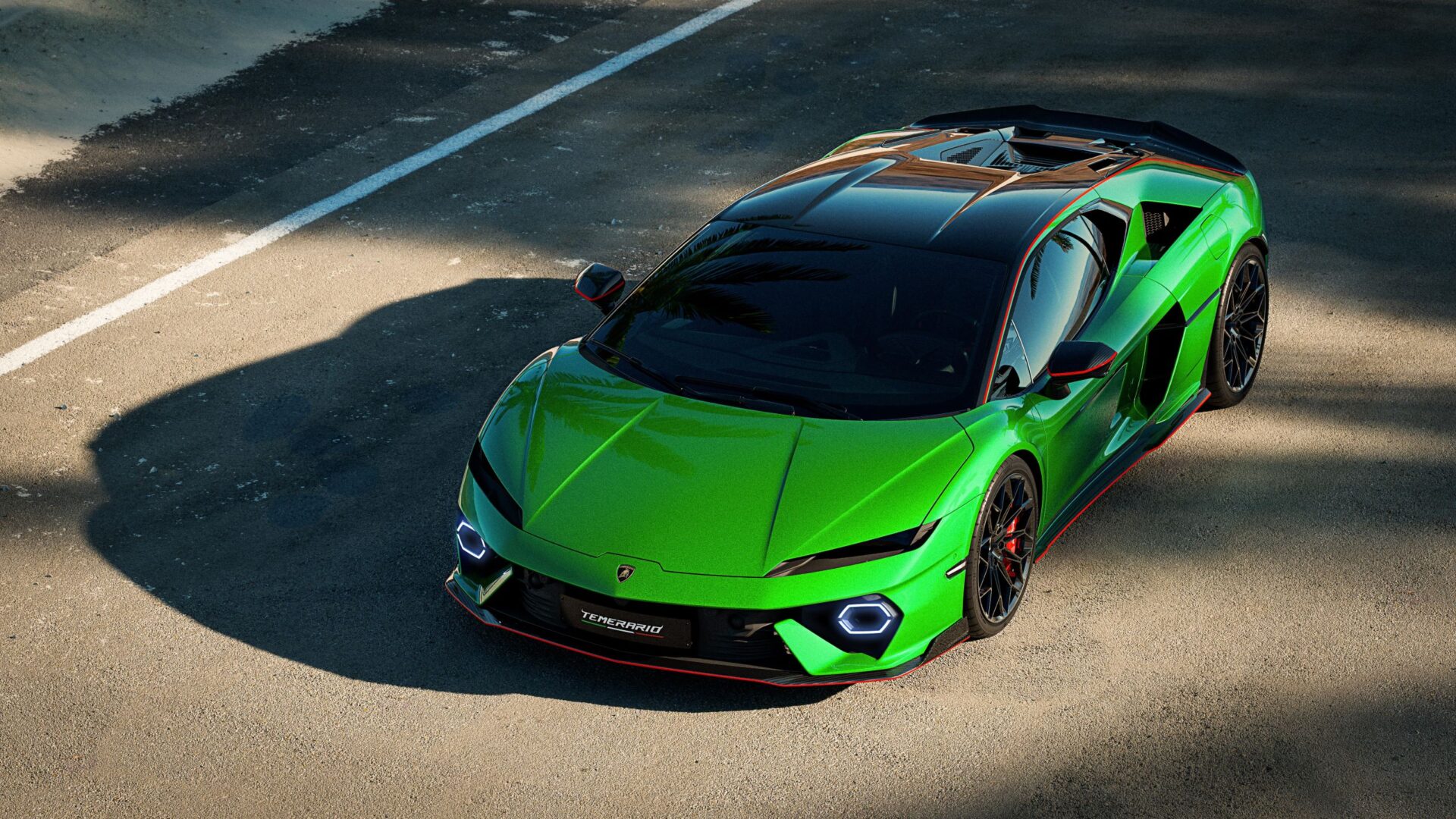
“We Have Our Shape”
You’ll know the Temerario is a Lamborghini with one glance. Why is that? It’s the shape, which could be described as a wedge contained by an arc. It started with the Countach, which was presented as a prototype 53 years ago. It continued to every Lamborghini supercar that followed.
In a Car and Driver interview, Lamborghini head of design, Mitja Borkert, confirmed why you know a Lambo as soon as you see one, saying, “We have our shape.” Even though wedge-defined supercar designs have been common for half a century, Lamborghini has been able to define a unique look within that form.
Over the past two decades, Lamborghini has been dressing that form with severe lines and creases inspired by the U.S. Air Force’s Lockheed F117 Nighthawk, the “stealth” fighter jet revealed in 1981. With that theme, Lamborghini set itself apart from archrival Ferrari more clearly than ever before.
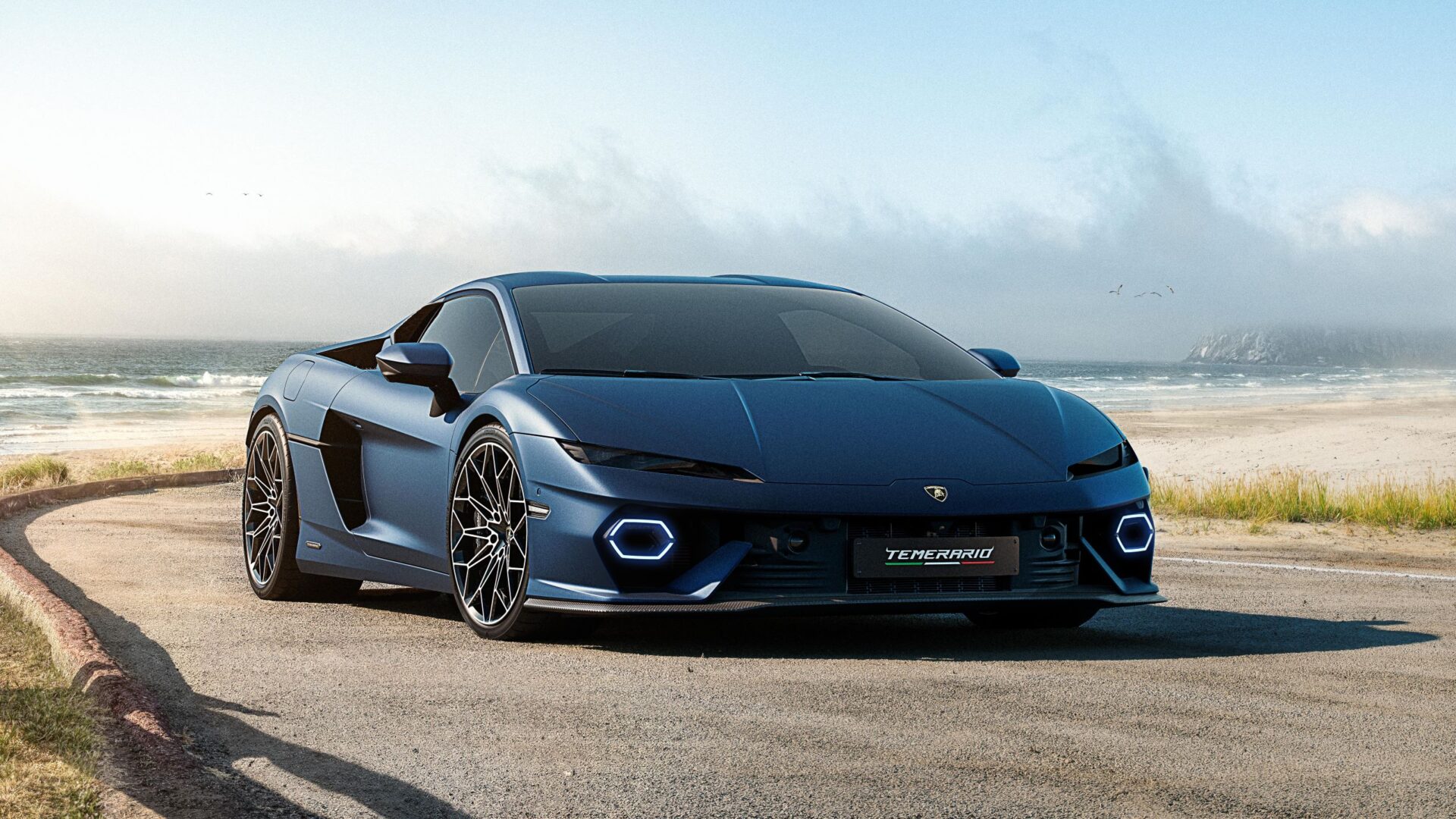
The Shape Evolves
The new Lamborghini Temerario indeed preserves the “shape,” but look again. The Huracán had shown somewhat softer edges than the Gallardo it had replaced, and the Temerario seems to soften things ever so slightly more. An extra five inches of length over the Huracán contributes to that flowing roofline effect.
We’re not talking about Miura-like curves, of course. Nor is the Temerario as curvy as the Ferrari Roma, 296, SF90 Stradale, and 12Cilindri. It is, we think, a seemingly more approachable design for Lamborghini, which these days has McLarens to contend with, too.
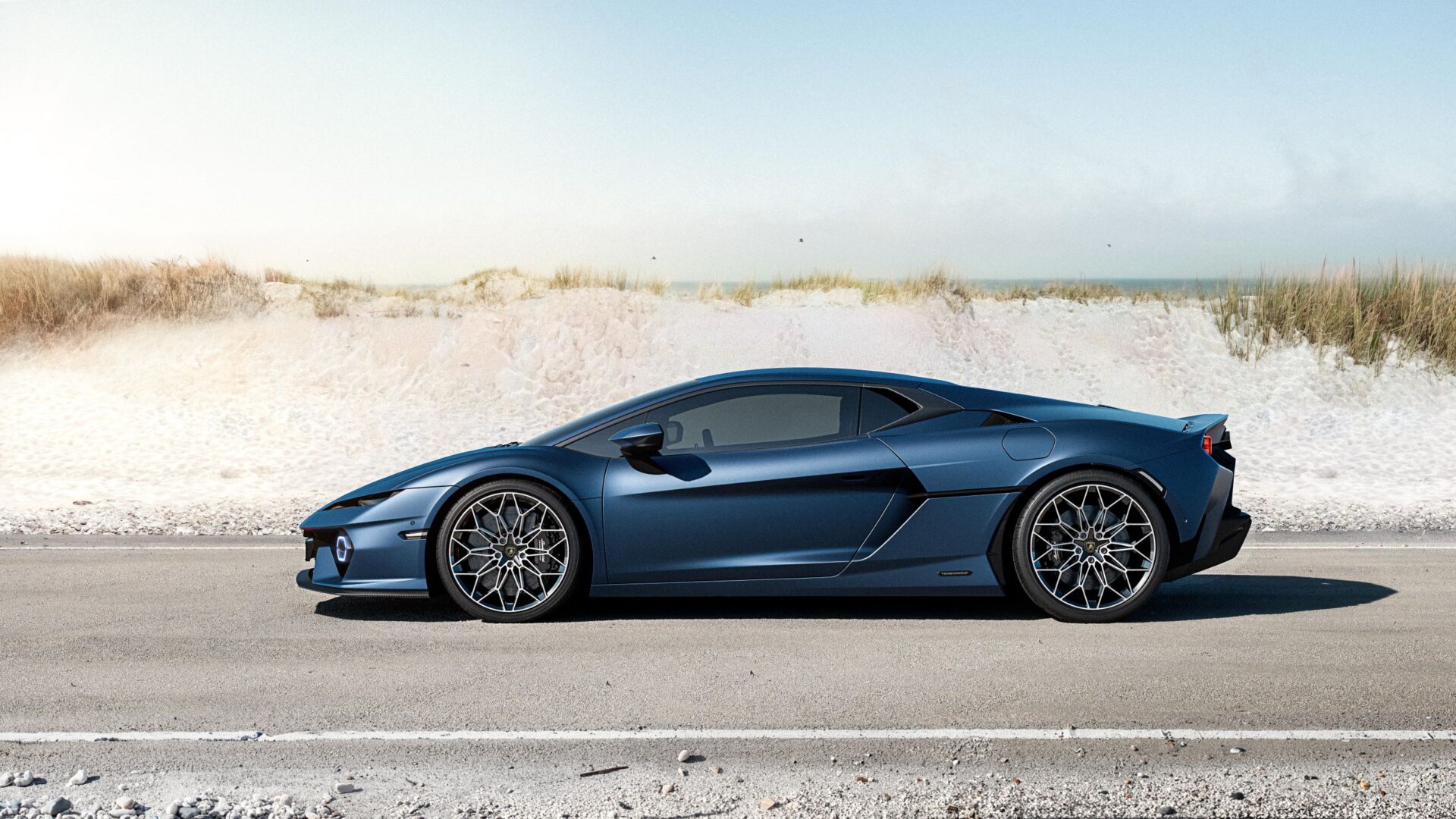
907 Horsepower. Any Questions?
Design can be subjective, but power and speed are measurable. It’s not every day you see a car boast a 50% increase in powertrain output over its predecessor, but that’s what we have with the Lamborghini Temerario vs. the Huracán. Specifically, the Huracán’s 5.2-liter naturally aspirated V10 topped out at 631 horsepower and 443 lb-ft. of peak torque.
The V8 is not the same Audi-based engine found in the Urus but rather a new Lamborghini-developed-and-built engine. Like the V8s used in all Ferraris and McLarens, and even the Corvette Z06, the new Lambo V8 employs a flat-plane crankshaft, rather than the cross-plane crankshaft used in most V8s. The new Lambo V8 can rev to a sky-high 10,000 rpm, its dual turbos cranking the boost to a 20.3 psi.
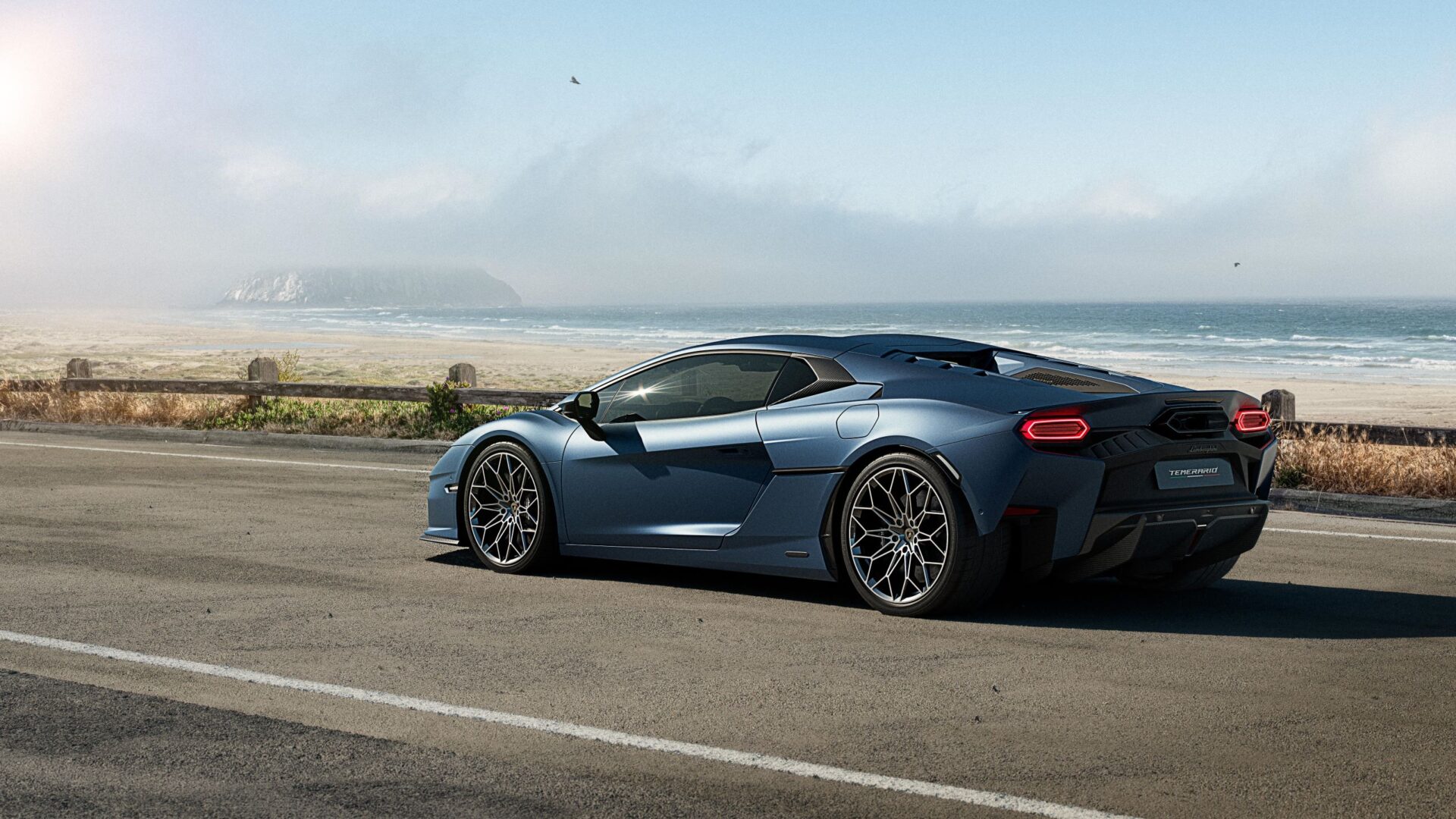
Running With the Revuelto
On its own, the Temerario’s twin-turbocharged 4.0-liter V8 puts out 789 horsepower at 9,000 rpm and sustains 538 lb-ft. of peak torque from 4,000-7,000 rpm. For comparison, the naturally aspirated V12 in Lamborghini’s flagship supercar, the Revuelto, churns out 813 hp at 9,250 rpm and 535 lb-ft. of peak torque at 6,750 rpm.
In other times, 789 horsepower would be spine-flattening enough for most supercar buyers. But because fuel economy and carbon dioxide-reduction regulations in some countries demand lower fuel consumption, Lamborghini has turned to hybridization. The bonus is a big boost in total output.
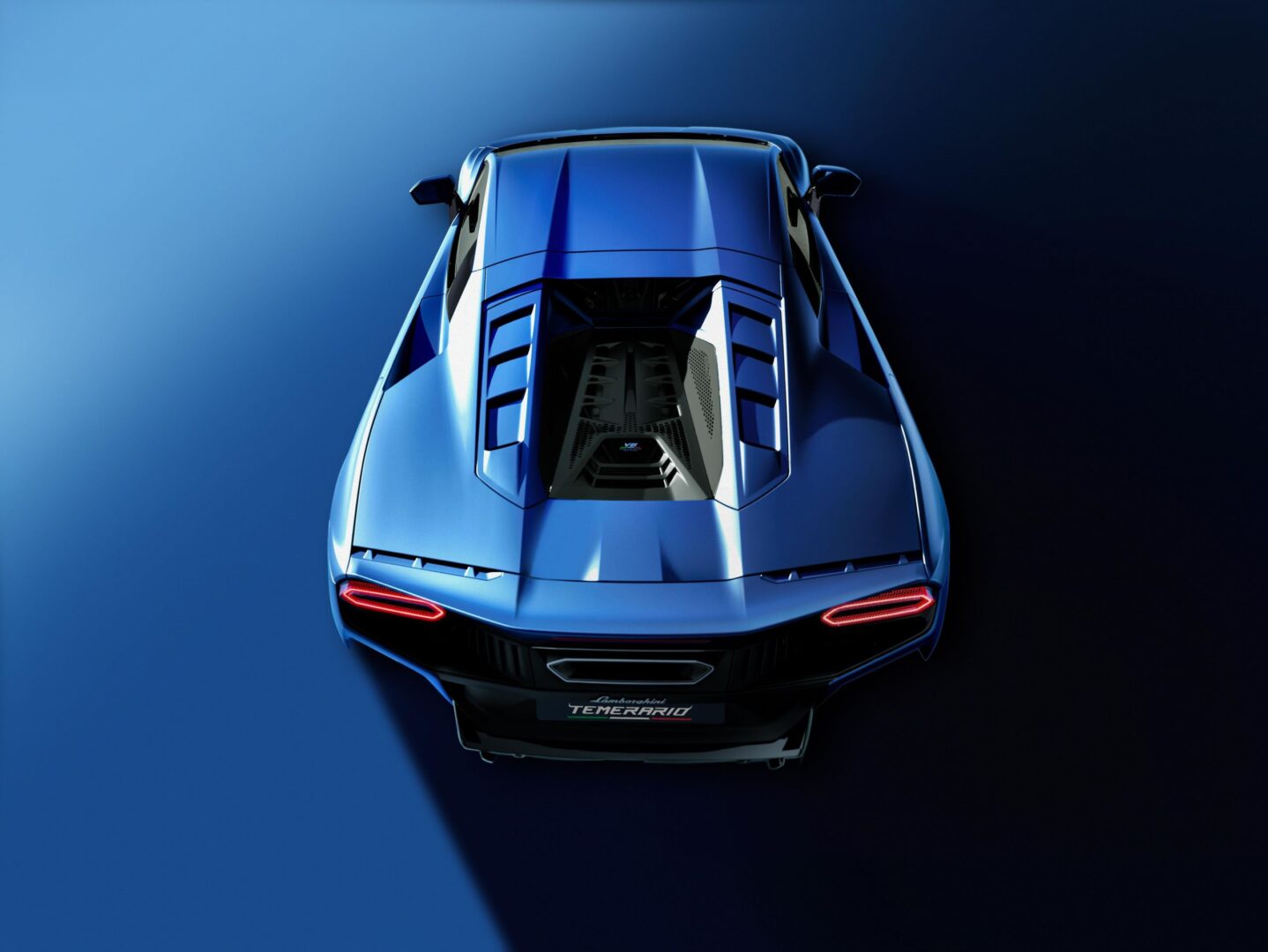
The Electric Side
Like the Revuelto, the Temerario employs three electric motors: one for each front wheel and a third installed between the V8 and the transmission. That rear motor kicks in to smooth out power delivery during gearshifts. The two front motors kick in to give the Temerario all-wheel drive under acceleration and some other conditions.
Lamborghini rates the total powertrain output at 907 horsepower. (The Revuelto boasts 1,001.) All torque from the gas engine and rear motor flows through an eight-speed dual-clutch automatic transmission that Lamborghini says shifts even more quickly and weighs a bit less than the 7-speed used in the Huracán. As in the Revuelto, front electric motors also provide torque vectoring to boost the car’s agility.
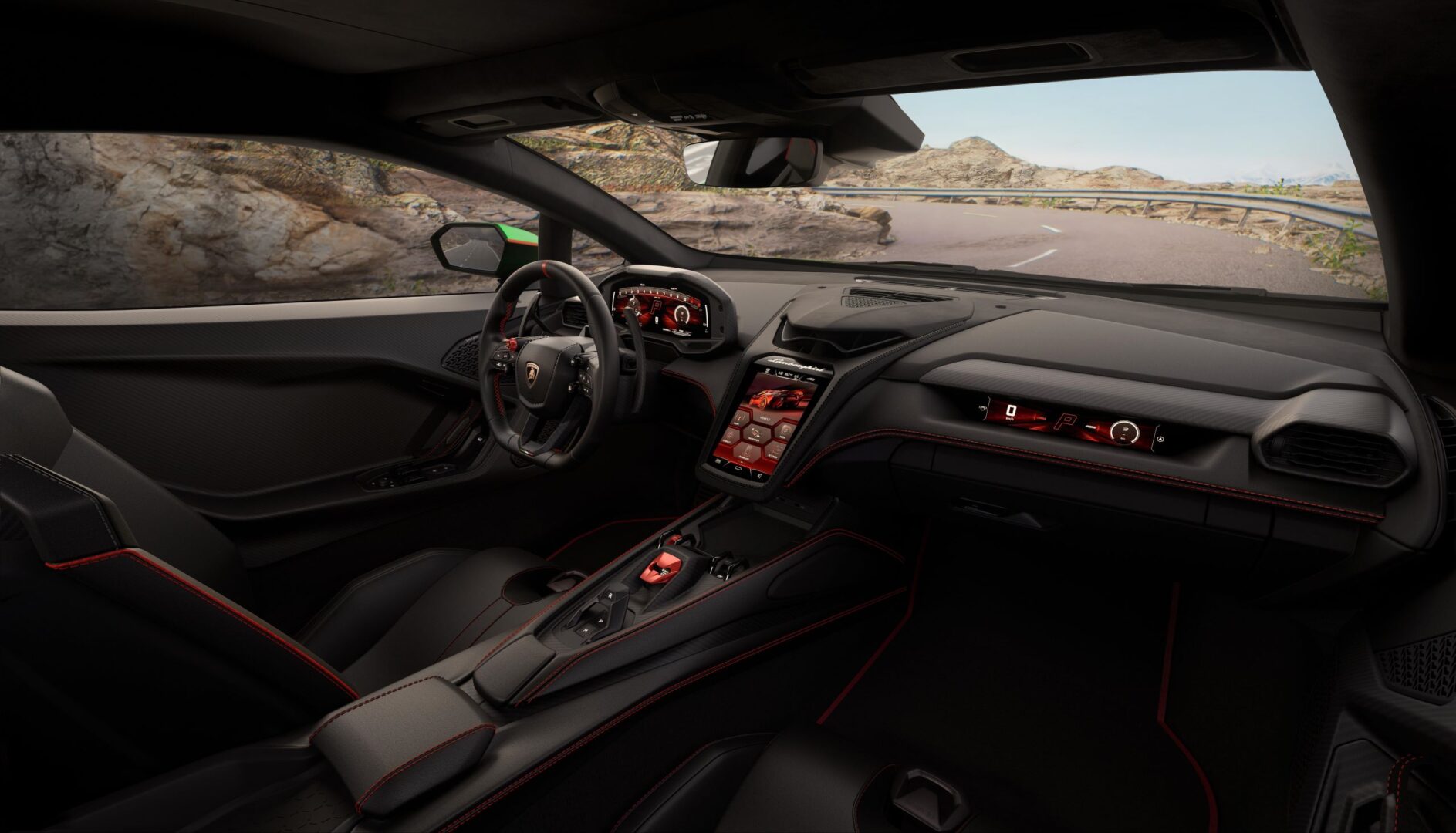
You Can Plug It In
The Temerario, like its Revuelto and Urus SE siblings, is a plug-in hybrid electric vehicle (PHEV). This means the 3.8-kWh lithium-ion battery has enough juice to run the car at lower speeds for short distances on battery power alone. Fun fact: Like the Ferrari SF90 Stradale, in that mode the Temerario operates as a front-wheel drive car.
The battery installed in the car’s center tunnel, which aids weight distribution and helps lower its center of gravity. The onboard charger can fully recharge the small battery in about a half-hour. While the car is being driven driving, the gas engine and regenerative braking charge the battery, as in other hybrid vehicles.
But here are the numbers you really want: Lamborghini says the Temerario can to rocket from zero to 100 km/h (62 mph) in 2.7 seconds, versus 2.5 for the Revuelto. The Temerario has a 213-mph claimed top speed, just 4 mph under the Revuelto.
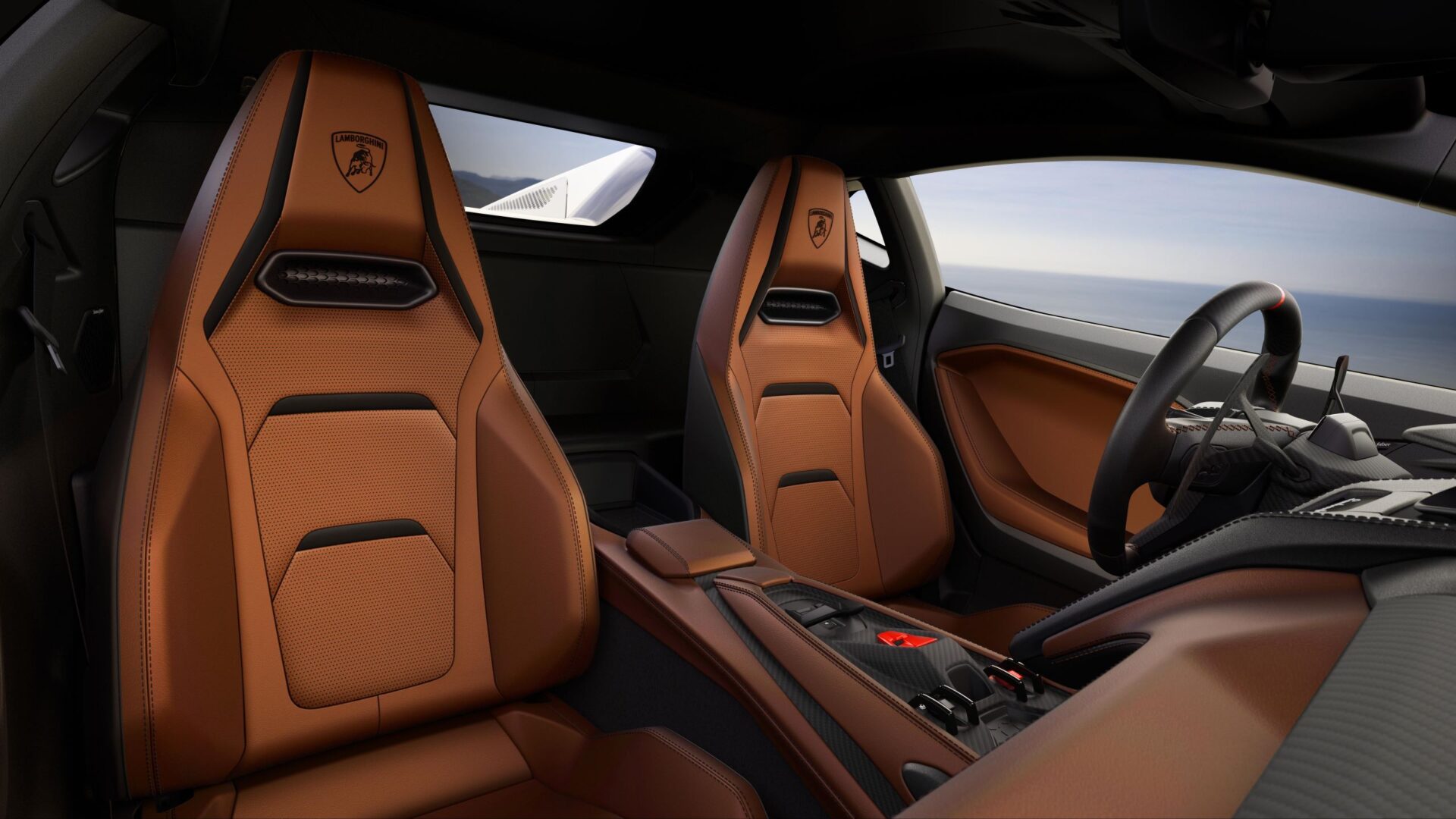
Drive It Every Day
The Temerario continues the carmaker’s trend toward providing comfort for longer drives. The new model has a bit more room than the Huracán, and the cockpit design appears more elegant, or at least less busy. “Elegant” also described how well Lamborghini integrated the cockpit’s three screens. The driver gets a configurable 12.3-inch digital gauge cluster, while the center 8.4-inch vertical screen is for audio, navigation, and other functions. A 9.1-inch horizontal screen entertains (or distracts) the passenger.
Different seat options are available, including 18-way power-adjustable comfort seats with heat and ventilation. If you love carbon fiber, there’s plenty of it offered in the options. Want to take your Temerario to the track and record your heroic exploits? An optional three-camera system includes the Lamborghini Telemetry 2.0 app, with 150 racetracks from around the world in its programming.
A Growing Class
As of late August, Lamborghini had not yest revealed the Temerario’s price, but some media have estimated $290,000. That’s a substantial hike over the $250,000 Huracán.
Lamborghini claims the Temerario is in a “league of its own,” but in fact it joins a growing league that so far includes the McLaren Artura starting at around $233,000 and Ferrari 296 GTB starting at about $342,000. And, while the $107,000 Corvette E-Ray hybrid might not be in that price league, its 2.5-second 0-60 sprint and 183-mph top speed are in the performance ballpark.

